Gallery éf presents New Year Exhibition
Thomas Bohle
Pink
ceramic x black ink painting
2006
0:00 1 Jan. - 5 Feb.
Gallery éf presents New Year Exhibition
Thomas Bohle ![]() x Zhang Shaojun
x Zhang Shaojun ![]()
Pink
ceramic x black ink painting
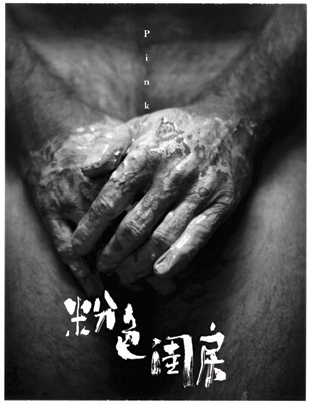
supported by Austrian Embassy/ Cultural Forum
in cooperation with Daniela Egger
visual collaboration: photo & film Gerhard Klocler
music: Diet.Mar
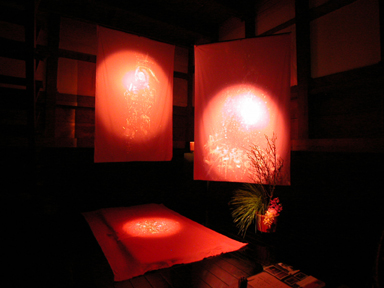
exhibition
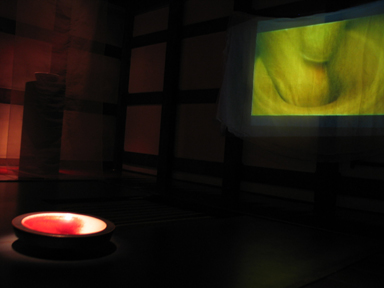
What does “Eros” mean anyway? We at Gallery éf have been pondering such thoughts over the last little while. Now two artists -one from the east and one from the west- have given us hints as to how this mysterious force motivates their artistic expression; each with a new body of work reflecting their exploration of erotic themes. So as the New Year begins, Eros will be the generative theme we will be focusing on. “Eros is my dear friend who invites me to a bed of creation” says artist Zhang Shaojun. who classifies eroticism as “what is not dried out”. He often uses black ink in his work due to its renewability. “What is not dried out can revitalize over and over again. It can provide lives. It clearly evokes the human obsession with life. The glaze which drips off the surface of Thomas’ pieces makes me conscious of what is ‘not dried out’”. Austrian ceramicist Thomas Bohle describes his work as “an erotic process, never being able to predict the end result, each time being asked to surrender to the flow. This is an everlasting attraction for me”. Bohle sees in Zhang’s work a free spirit that plays with the richness of sensuality. “Zhang’s work touches my own erotic space inside. Having met him, and not being able to communicate through words, I instantly felt his sensuality that I had felt in his paintings. I assume he can work blindfolded; in much the same way I would do with clay. I become one with the material in my hands. There should be no space between the clay and I. This is the way Eros is transported into artwork”. These two artists, who find such sympathetic approaches to sensuality in eachother’s work, will exhibit together in a very historical venue; a renovated clay warehouse built in 1868. And it is with this sense of history, that we will usher in the New Year with the exhibition “Pink”. translation: Izumi & Dave |
Year-crossing & opening event
0:00, 1 Jan. (24:00, 31 Dec.)
Yin-yang Tea Ceremony
concert: Shinto flute (Japanese Imperial instrument)
player: Kazue Tajima
admission 1,000Yen
This instrument was originally played in China and other Asian countries since 3,000years ago. It came down from China to Japan around 5-6C with Buddhism. The structure and method hasn’t been changed since then. The shape represents a phoenix resting its wings. Seventeen pipes are tightly set into a round shaped case. Performer blows from the mouthpiece underneath. It sounds uninterruptedly by both exhalation and inhalation, it gives an image of an eternal light. The music is based on Taoism and theory of Yin-Yang and the five elements. Each music are specified to be played in a certain time, season, color, direction and occasion. The sounds guide us to the ancient time, where people were appreciating to live in good harmony with nature. In this year-crossing concert, Kazue Tajima plays the music for New Year and for a sexual occasion, along to the theme of the exhibition "Pink". |
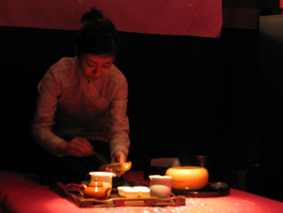
Yin-yang Tea ceremony
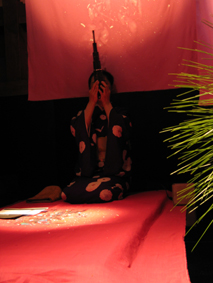
Shinto Flute concert: Kazue Tajima
New year event
18:00, 2 Jan.
live painting by Zhang Shaojun
admission free
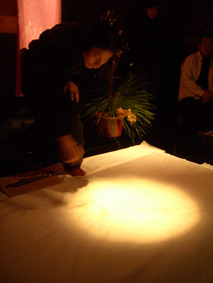
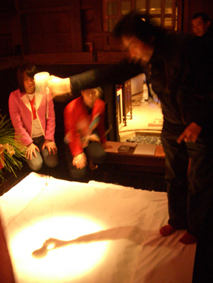
Zhang's live painting
Thomas Bohle (ceramist) Born in Dornbirn, Austria in 1958. Started studying pottery since 1987, experiences in different studios. Opened his own studio at Dornbirn in 1991. First trip to Japan in 2002, visited different potters. First solo exhibition in Japan (Tokyo, Gallery ef, April-May) and in China (Shanghai, Peninsula Art Center, July) in 2004. Thomas Bohle |
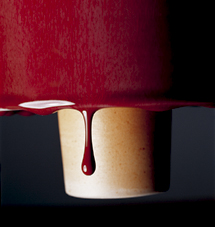
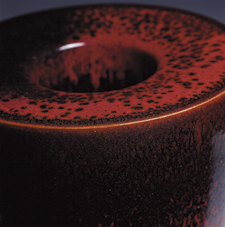
photo: Frigesch Lampelmayer
Zhang Shaojun (painter) An Asian avant-garde artist, borin in Shanghai, China in 1958. solo exhibitions at Gallery éf |
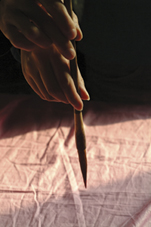
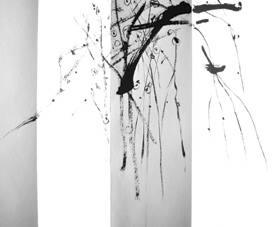
1962 born in Hard, Austria, studies electronics and music in Vienna, works as a printer, set - decorator and washing machine salesman moves to London, England, works illegally as chef and waiter ...sometimes, first work published - fashion and advertisingwork, portraits and "free work" successively he develops his destinctive visionary style, which is much appreciated with certain folks. Gerhard Klocker |
SATSUMA Lute concert & lecture 19:30, 23/ 25 Feb. Kakushin Tomoyoshi
3.10
admission 2,500Yen (with 1drink) In the early morning of March 10th, 1945, eastern Tokyo was heavily bombed by the US air force. More than 100,000 people were killed that morning, most of victims were elders, women, and children.
admission: 2,000Yen
Samm Bennett's explorations in sound and rhythm are ever-changing and always interesting. Whether using drums and percussion, electronic instruments, voice, toys, gadgets, vibrators or whatever likely object happens to be close enough to grab, his performances continually surprise and engage his audiences. More info, sound files, etc. Ned Rothenberg's intense focus on developing his own unique language for wind instruments (saxophones, clarinets and shakuhachi) has earned him high acclaim. His mastery of circular breathing and his creation of rich harmonic overtones are just two of the factors that make Ned's performances a delight for the listener. Bennett and Rothenberg's concert at the historic Gallery ef will be a unique opportunity to hear these longtime collaborators perform in a completely acoustic, unamplified setting. Seating in the lovely and intimate gallery space is limited, and reservations are required.
24 Mar. - 16 Apr.
Hidetoshi Yamada started working as an artist for the Ozone Community in 1991 and following a series of solo exhibitions with them, in 1999 he moved to England. There, he developed his creative activities, mainly in London's East End, holding several well-received solo exhibitions of his work.
ROUROU x Hidetoshi Yamada x Gallery éf
Ladies': black x pink Mens': pink x purple Japanese size
collaboration with Chinese traditional craft: paper cutting
|
|
introduction 1
|
 |
SATSUMA Lute concert & lecture 19:30, 20/ 22 Apr. Kakushin Tomoyoshi
Gallery éf 9th anniversary exhibition 28 Apr. - 4 Jun. 12:00-21:00 closed on Tuesdays opening reception 19:00 Fri. 28 Apr.
live painting at bar
admission: 1,500Yen with 1 drink collaboration with Edo Kiyari:
Photographer Toshi. OTA and painter Keeda Oikawa have started collaboration work series "LE PITTORESQUE AU JAPON" since 2002. Both two artists who are active and well regarded in their respective fields, inspire each other and create the world of "picturesque Japan" as the title suggests, by the combination of photograph and drawing.
Toshi. OTA: Photographer / Director of Photography Keeda Oikawa: painting / illustration
Japanese Folk Song
|
16 Jun. - 17 Jul.
Manabu Kikuchi
SABI KIJYAKU - Rust Colored KIMONO
textile (rust dyeing)
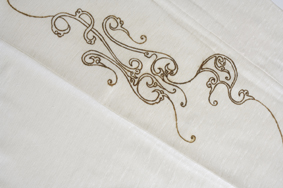
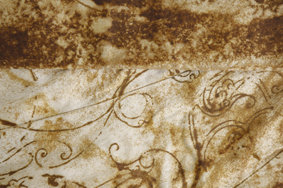
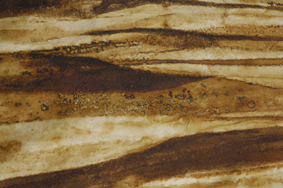
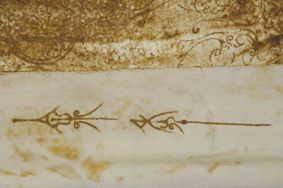
Manabu Kikuchi has been a main textile designer for ISSEY MIYAKE MEN line since 1988.
|
|
Manabu Kikuchi biography Graduated from Bunka Fashion College, Textile design major, and started to work at Miyashin Co., LTD. With working at this woven fabric factory, he studied technical know-how of woven fabric and all knowledge about textile. During working at this clothier, he created and provided material for collection of Miyake Design Studio (MDS) presided by Issey Miyake. At that time, he was highly influenced by a textile designer, Makiko Minagawa and deepened the understanding toward creating products. In 1988, he changed his career at MDS, directed by Tomio Mohri. After transferred to MDS, he was put in charge of the textile direction of Men’s collection team directed by Issey Miyake and Tomio Mohri. During this time, he learned idea and methodology of creating products from various aspects physically, mentally and realistically. This experience was his origin of his idea and its development. Since 1993, he has taken charge of the textile design of Naoki Takizawa, the main designer of ISSEY MIYAKE. With his philosophy, Kikuchi learned modern sense and orientation of design and got chances of development of various material and presentation of his works at Paris Collection, Milan Collection and other collections. In 2002, he got an opportunity to design the textile of ISSEY MIYAKE FETE and re-realized the origin of idea and mind of Issey Miyake. Kikuchi has been interested in the color design of rust and continued research and development. When he explored the way of expression, Tomio Mohri proposed the concept of the “Rust Exhibition” and Kikuchi took charge of the production of drop curtain, which is main of space presentation. In 2000, October, Kikuchi presented his rust dyed silk at the Aoyama Spiral Garden, in Tokyo. The size of the fabric was 9 x 15 meters and he used this huge fabric to resemble a drop curtain. This covered whole venue and the title was named as “Rust Color Fabric Dividing Centuries”. At the present, Kikuchi works as a textile designer of “ISSEY MIYAKE by NAOKI TAKIZAWA”. To develop new materials, he often visits many places in both domestic and overseas to explore product districts and find materials. As an artist, he creates various kinds of art pieces on the theme of “rust” to express the dynamism and the splendor of nature. |
|
| Solo exhibition | |
| 2005, May | " [lab] Experimental Space Exhibition" (AKI-EX gallery, Tokyo) |
| 2004, February | "Rust Style Design" (AKI-EX gallery, Tokyo) |
| 2003, September | "Rust Gold Color in Kyoto" (Art Space Kan, Kyoto) |
| 2002, January | "Rust Gold Color" (AKI-EX gallery, Tokyo) |
| Selected Exhibition | |
| 2004, April | "Seiryu Exhibition, Mud Rust Silk Fabric"(Kyoto City Museum, Kyoto) |
| 2000, October | "Color Space of Molly Part 4, SABI (rust)"(Aoyama Spiral Garden, Tokyo) |
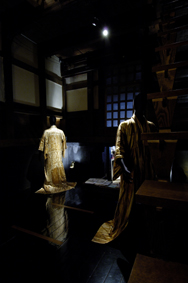
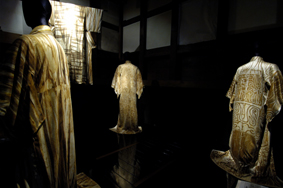
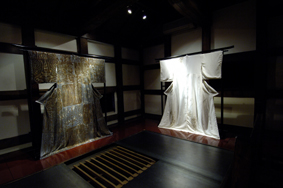
SATSUMA Lute concert & lecture
19:30, 20/ 22 Jul.
Kakushin Tomoyoshi
"hanaichikan" vol.18
featuring: Saigou Takamori
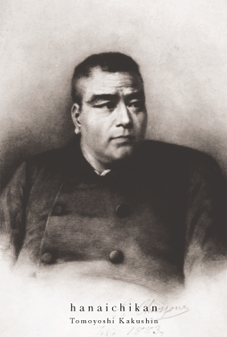
28 July - 3 Sep.
sound installation by Yasuhiro Otani
SOUND SPREADING: 24 channel multi-sound system
performance: collaboration with Yasuhiro Otani
story telling
Yoko Kanda
"Yotsuya Kaidan"
19:30, Thu. 3 Aug.

sound improvisation
Kazuhisa Uchihashi
musician (guitar, daxophon)
19:30, Thu. 31 Aug.

sound improvisation
Yumiko Tanaka
Gidayu, Shamisen, singing
19:30, Sat. 2 Sep.

14 - 24 Sep.
Leonardo Pellegatta with ROUROU
"Indefinite Path"
photograph
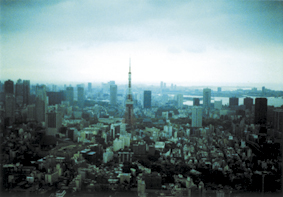
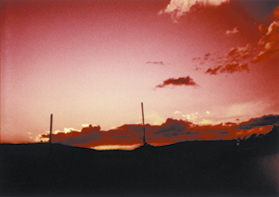
The body of photographs "Indefinite Path" is a journey through a real landscape.The journey is unsure, unconscious, lasting for an unknown length of time; it has no preconceived direction or goals, but never than less it has full of meanings:it is the movement of people, places and colors, flowing through life. The birth of this series of Pellegatta was the chance to meet the creative fashion brand ROUROU, and to have the opportunity to publish a photo-book as the first product in their artist collaboration project with Gallery ef.
Leonardo Pellegatta Born in Milan Italy in 1970; graduated in Fine Arts at the School of Visual Arts of New York in 1996. Since 1997, works as a professional photographer especially for theater and dance performance. Since 1998, becomes official photographer for the Festival of the Two Worlds. Images has been used by Shiseido and Malo basic for commercial use. Since 2003, moves to Japan, starts collaborating with some magazines.Publishes on the Mono magazine part of a series of portrait of the Italian Circus and the series "Tokyo East End Drive" about the urban landscape of Tokyo along the borderline between the Chiba prefecture and Tokyo prefecture. The same year 2003, contacted by Dentsu Japan, takes the photos for the Yomiuri Shimbun anniversary campaign. Has partecipated to several exibitions in Italy and abroad with personal and experimental works. Along career as a photographer, directed some experimental videos. In 1997, video "I am making a road" is selected at the Invideo festival of the Triennale of Milan. In 2001 with G. De Vecchi, directs the documentary film "Tabanka ka mori" (a musical heritage at the Cape Verde Islands), that is supported by the Unesco in the cultural program "La route de l'esclave". Since a few years, working on a documentary film and a photographic project about the Italian Circus. |
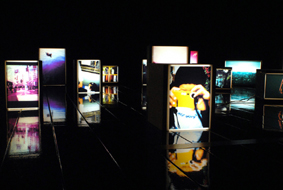
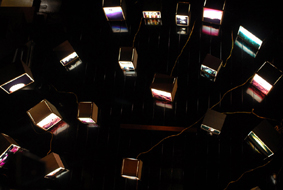
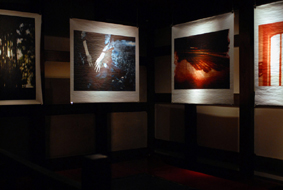
29 Sep. - 22 Oct.
Seiwa Hada
emptiness
tin work
Seiwa Hada's work is all made of tin. After having graduated from university with a major in ceramics, he a variety of different traditional crafts fields so as to find his artistic direction and found that he was particularly fascinated by tin. He consistently focused on his own expression while studying techniques under the masters of traditional craft. |
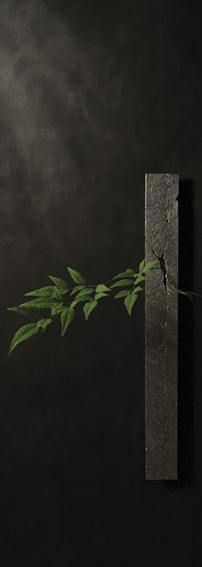 |
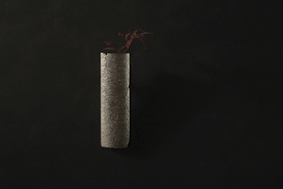
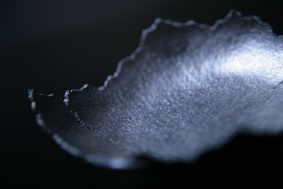
photo: Hideki Shiozawa
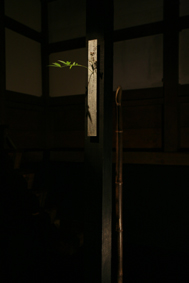
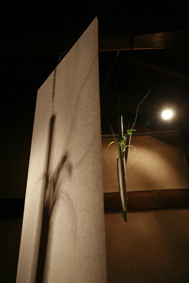
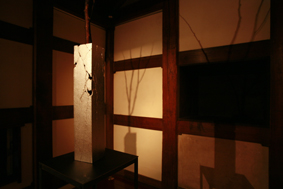
music month
Forest under the Moonlight vol.5
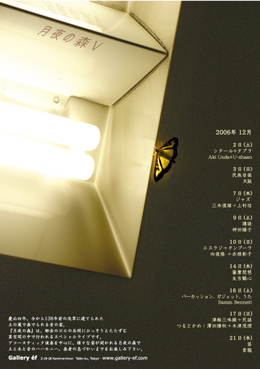
flyer design: polarity design
Sat. 2 |
|
|
Sun. 3 |
|
TENKUU |
Thu. 7 |
|
Toshio Miki + Shin Kamimura |
Sat. 9 traditional story telling 19:00 |
 |
Yoko Kanda |
Sun. 10 |
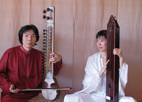 |
Takashi KOUGO + Akiko AKANE |
Thu. 14 |
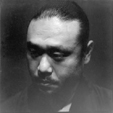 photo: Gerhard Klocker |
Kakushin Tomoyoshi |
Sat. 16 |
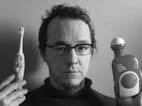 |
Samm Bennett's explorations in sound and rhythm are ever-changing and always interesting. Whether using drums and percussion, electronic instruments, voice, toys, gadgets, vibrators or whatever likely object happens to be close enough to grab, his performances continually surprise and engage his audiences. |
Sun. 17 |
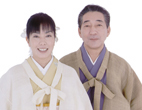 |
TSURUtoKAME: Katsuaki Sawada + Shigeri Kitsu |
Thu. 21 |
 photo: Renji Tachibana |
UNRYU |